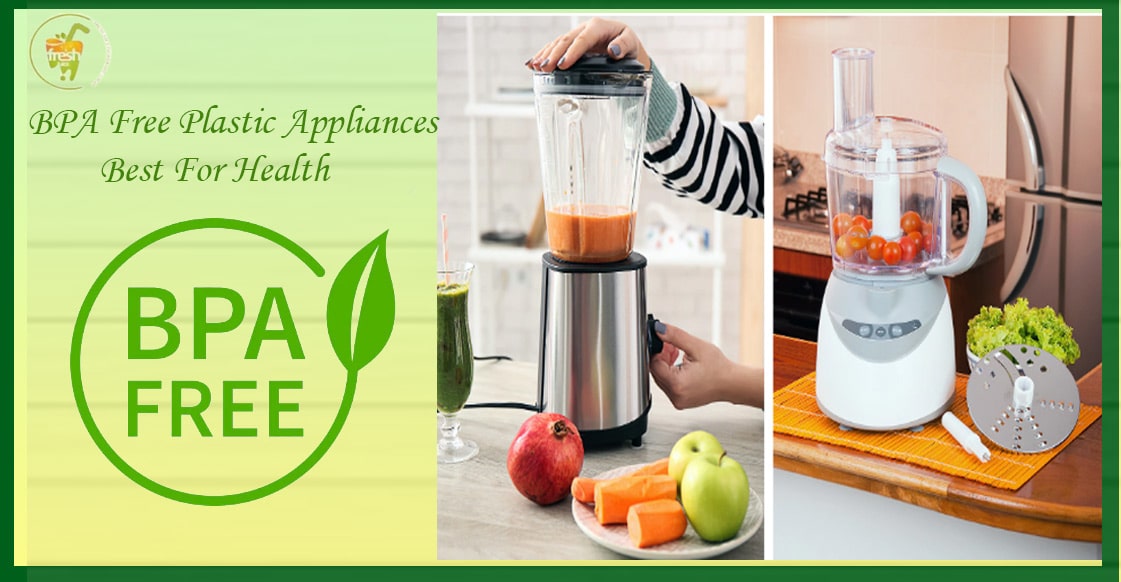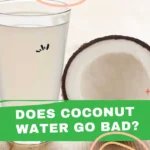Bisphenol A (BPA) is a chemical used for decades in various consumer products, including food containers, water bottles, and cash register receipts. However, concerns have been raised about the potential health effects of BPA exposure, leading to the development of BPA-free products. But is it better?
In this article, we will delve into what it is, its potential health effects, and whether or not BPA-free products are a good alternative.
To answer these questions, we have consulted several authoritative sources on the topic, including the National Institute of Environmental Health Sciences (NIEHS), the Environmental Protection Agency (EPA), and the Food and Drug Administration (FDA).
What is BPA?
Bisphenol A an abbreviation of BPA, which is a chemical compound that is used in the production of certain types of plastics and resins. It is often found in food and drink containers, such as water bottles, baby bottles, and canned foods. It can also be found in other consumer products, such as thermal paper receipts.
There has been much concern about the potential health effects of BPA exposure. Some studies have suggested that it may be linked to various health problems, including reproductive disorders, developmental issues in children, and certain types of cancer. However, the scientific community is still divided on the subject of whether or not Bisphenol is harmful to human health.
Is BPS-Free Plastic Safe?
BPA (bisphenol A) is a chemical compound that has been used for decades in the manufacturing of plastic products, including food and drink containers, as well as in the lining of metal cans. However, concerns have been raised about the potential health risks associated with BPA exposure, leading to the development of BPA-free alternatives.
Generally, BPA-free products are considered safer than those containing BPA. Studies have linked its exposure to various health issues, including reproductive problems, developmental delays in children, and an increased risk of certain cancers. While the exact threat posed by it is still a matter of debate among researchers, many experts believe that reducing exposure to this chemical is a wise precaution.
One potential concern with Bisphenol-free products is that they may contain other chemicals that could also be harmful. For example, some manufacturers have replaced it with similar compounds, such as bisphenol S (BPS) or bisphenol F (BPF), which may have similar health risks. However, research on these compounds is still limited, and whether they pose a significant danger to human health is unclear.
Overall, while Bisphenol-free products are generally considered safer than those containing BPA, it is essential to note that they may not be entirely risk-free. Consumers should also be aware that not all products labelled as “BPA-free” are created equal; some may still contain trace amounts of the chemical or other harmful compounds. To reduce exposure to potentially harmful chemicals in plastics and other materials, it is advisable to choose products made from natural materials whenever possible and to avoid heating plastic containers or using them for hot foods or liquids.
BPA Free Signs
The use of BPA-free signs has become increasingly common in recent years as more and more consumers have become aware of the potential health risks associated with exposure to bisphenol A. In addition to food and beverage containers, BPA-free signs may also be found on other types of products such as baby bottles, toys, and medical devices.
It is important to note that while Bisphenol-free products may be safer than those that contain bisphenol A, they are not necessarily completely free from all potentially harmful chemicals. Consumers should still exercise caution when using any plastic product and follow all manufacturer guidelines for safe use and disposal.

Why Are Some People Concerned About BPA? Is It Dangerous?
Some people are concerned about it because it has been shown to mimic estrogen in the body. Estrogen is a crucial hormone in many bodily functions, including reproductive health. It can bind to estrogen receptors and disrupt regular hormonal activity when it enters the body. This can lead to various health problems, including infertility, obesity, and certain types of cancer.
Another reason why it is a cause for concern is that it can leach from plastic containers into food and drink. This is especially true when these containers are heated or exposed to acidic substances. As a result, people who regularly consume food or drink that has been in contact with Bisphenol-containing plastics may be at risk of exposure.
Studies have also linked BPA exposure to developmental problems in children. Research has shown that pregnant women exposed to high levels of BPA may be more likely to give birth prematurely or have children with behavioural issues.
In response to these concerns, many countries have taken steps to limit the use of BPA in consumer products. For example, the European Union banned using it in baby bottles in 2011, and Canada declared Bisphenol a toxic substance in 2010.
Which Products May Contain BPA?
One common item that may contain Bisphenol is plastic water bottles. This is especially true for older bottles or those made from polycarbonate plastic. Other plastic food containers, such as those used for storing leftovers or packing lunches, may also contain BPA.
Canned foods are another potential source of Bisphenol. The chemical is often used in the lining of cans to help preserve the food and prevent contamination. While some manufacturers have switched to BPA-free linings, many still use the chemical.
Finally, thermal paper receipts may also contain Bisphenol. This type of paper is often used for receipts from stores, ATMs, and gas pumps. When the paper is heated during printing, it can release small amounts of BPA.
It is important to note that while these items may contain BPA, the exposure level is generally considered low. However, individuals concerned about their exposure to the chemical may choose to limit their use of these products.
BPA-Free Pet Bottles
Many manufacturers have started producing Bisphenol-free PET bottles. These bottles are made without the use of Bisphenol A or any other harmful chemicals that could leach into the bottle’s contents. Instead, they are made using alternative materials considered safer for human consumption.
One of the main benefits of BPA-free PET bottles is that they are safer for consumers. They do not contain harmful chemicals that could cause health problems, making them a popular choice for people concerned about their health and well-being.
Another benefit of Bisphenol-free PET bottles is that they are more environmentally friendly than traditional plastic bottles. Because they do not contain Bisphenol A or other harmful chemicals, they are less likely to harm the environment when disposed of.
Overall, BPA-free PET bottles are a safe and environmentally friendly alternative to traditional plastic bottles. They are becoming increasingly popular among consumers looking for safer, more sustainable packaging options.

Role Of BPA-Free Plastics In Juicers And Blenders
The role of Bisphenol-free plastics in juicers and blenders is to provide a safe and healthy alternative to traditional plastics that contain BPA. These appliances are used to process food and beverages, which means that any chemicals that leach from the plastic can contaminate the food or drink being prepared. BPA-free plastics are designed to prevent this, ensuring that the food and beverages produced by these appliances are safe for consumption.
There are several benefits of using Bisphenol free plastics in juicers and blenders:
- They are safer for human health as they do not contain harmful chemicals that can leach into food and beverages.
- They are more environmentally friendly as they do not contribute to the pollution caused by traditional plastics.
- They are more durable and long-lasting than traditional plastics, meaning they will last longer and require less frequent replacement.
What Does Bisphenol Do To The Body?
Bisphenol A (BPA) is a chemical compound that produces various plastics, such as water bottles, food containers, and baby bottles. It can also be found in the lining of canned foods, dental sealants, and thermal paper receipts. While It has been widely used for decades, studies have shown that exposure to this chemical can potentially affect humans.
Endocrine Disruption
Endocrine disruption is one of BPA exposure’s most significant potential health effects. It is known to mimic estrogen, a crucial hormone in human development and reproduction. It can bind to estrogen receptors and disrupt regular hormonal activity when it enters the body. This can lead to various health problems, including developmental issues, reproductive problems, and an increased risk of certain cancers.
Developmental Issues
Exposure to BPA during pregnancy can have adverse effects on fetal development. Studies have shown that its exposure can lead to developmental issues in fetuses, including neurological and behavioural problems. Children exposed to it during their early years may also experience developmental delays and behavioural issues.
Reproductive Problems
BPA exposure has been linked to various reproductive problems in both men and women. In men, exposure to Bisphenol can reduce sperm quality and quantity, leading to fertility issues. Exposure to this can disrupt the menstrual cycle and lead to infertility in women.
Cancer
While research on the link between BPA exposure and cancer is still ongoing, some studies have suggested that there may be a connection between the two. Animal studies have shown that exposure to high levels of BPA can increase the risk of certain types of cancer, including breast and prostate cancer.
Cardiovascular Disease
Recent studies have suggested that exposure to BPA may also increase the risk of cardiovascular disease. Researchers have found that people with higher levels of BPA in their urine are more likely to develop hypertension and other cardiovascular problems.
How To Minimize Bisphenol Exposure?
By following these tips, you can reduce your exposure to it and help protect your health.
- Avoid using plastic containers labelled with recycling codes 3 or 7, as these may contain BPA. Instead, choose glass, stainless steel, or Bisphenol-free plastic containers.
- Reduce your consumption of canned foods, as the lining of many cans contains BPA. Choose fresh or frozen fruits and vegetables instead.
- Be cautious when handling thermal paper receipts, as these may also contain. Bisphenol Wash your hands after handling receipts and avoid storing them in your wallet or purse.
- Choose BPA-free baby bottles and sippy cups for infants and young children.
- Use natural cleaning products instead of harsh chemicals that may contain BPA.
- Eat a balanced diet with plenty of fresh fruits and vegetables, whole grains, and lean protein to support overall health.
Governmental Bisphenol-Free Action Plan
The Governmental BPA-free Action Plan is a set of regulations and guidelines created by various governments to reduce the use of Bisphenol A (BPA) in consumer products. It is a chemical used in the production of plastics and epoxy resins, and it has been linked to a range of health problems, including cancer, reproductive disorders, and developmental issues. The action plan aims to limit exposure to it by reducing its use in products that come into contact with food and beverages.
The Bisphenol-free action plan includes several key components. First, it limits the amount of BPA used in certain products, such as baby bottles, sippy cups, and infant formula packaging. These limits vary depending on the product and the country but generally range from 0.1 to 0.3 parts per billion.
Second, the action plan encourages manufacturers to find alternatives to Bisphenol. This may involve using different chemicals or materials in their products or finding new ways to produce them without BPA.
Third, the action plan includes education and outreach programs to inform consumers about the risks associated with it and how to reduce their exposure. This may include providing information on choosing BPA-free products or adequately storing and disposing of items containing BPA.
Overall, the Governmental BPA-free Action Plan is essential to reducing exposure to this harmful chemical. By setting limits on its use and encouraging alternatives, governments are helping to protect public health and ensure that consumer products are safe for use.
BPA Alternatives
Here are some of the alternatives for Bisphenol.
Tritan
One of the most promising alternatives is Tritan, a copolyester free of BPA and other harmful chemicals. Tritan is used in many products, including water bottles, food storage containers, and baby bottles. It is safe in food contact applications and does not leach harmful chemicals into food or beverages.
Polyethene Terephthalate (PET)
Another alternative is polyethene terephthalate (PET), commonly used in beverage bottle manufacturing. PET is also free of Bisphenol and safe for food contact applications. However, concerns have been raised about the potential environmental impact of PET, as it is not biodegradable and can contribute to plastic pollution.
Polycarbonate (PC)
Polycarbonate (PC) is another Bisphenol alternative that has been used in the manufacturing of consumer products. However, PCs can still contain trace amounts of Bisphenol, which can leach into food or beverages over time. As a result, many manufacturers have moved away from using PCs in favour of other BPA alternatives.
Are BPA Alternatives Safe?
Bisphenol A (BPA) is a chemical used for decades in manufacturing certain plastics and resins. However, studies have shown that BPA can seep into food or beverages from containers, potentially causing health problems. As a result, many companies have started using alternatives to BPA in their products. The question is whether these alternatives are safe.
The good news is that many current BPA alternatives are considered safe by regulatory agencies such as the U.S. Food and Drug Administration (FDA) and the European Food Safety Authority (EFSA). These alternatives include:
Bisphenol S (BPS)
This chemical is structurally similar to it but has a slightly different molecular structure, which makes it less likely to leach into food or beverages. According to a study published in Environmental Science & Technology, BPS is less estrogenic than BPA, meaning it has less potential to disrupt hormone levels in the body.
Bisphenol F (BPF)
Like BPS, BPF is structurally similar to BPA but has a different molecular structure, making it less likely to leach into food or beverages. According to a study published in Food Additives & Contaminants: Part A, BPF is less estrogenic than BPA and has a low potential for toxicity.
Acrylics
Some companies have started using acrylics instead of polycarbonate plastics (which contain BPA) for products like baby bottles and sippy cups. Acrylics are considered safe by regulatory agencies such as the FDA and EFSA.
However, it’s worth noting that some studies have raised concerns about the safety of specific BPA alternatives. For example, a study published in Environmental Health Perspectives found that bisphenol AF (BPAF), a chemical used to replace BPA in some products, was just as estrogenic as BPA and had similar effects on the body. Additionally, some experts have raised concerns about the need for long-term safety data for some BPA alternatives.
What Can Parents Do For a BPA-Free Family?
Children’s health matters a lot. Therefore, here are some things that parents can do to have a BPA-free family:
Avoid Using Plastic Products That Contain BPA.
Parents should avoid using plastic products that contain BPA, such as water bottles, food storage containers, and baby bottles. Instead, they should opt for BPA-free alternatives made from glass, stainless steel, or other materials.
Choose Fresh Foods Over Canned Foods.
Canned foods are often lined with materials that contain them. Parents can reduce their family’s exposure to BPA by choosing fresh foods over canned foods whenever possible.
Read Labels Carefully
Many products contain BPA, even if they are not made of plastic or are not canned foods. Parents should read labels carefully and look for products labelled as “BPA-free.”
Use Natural Cleaning Products.
Some cleaning products contain chemicals that can leach BPA from plastic products. Parents can reduce their family’s exposure to BPA by using natural cleaning products.
Breastfeed If Possible
Parents should breastfeed their babies instead of using a formula that may contain BPA from the lining of cans.
Be Aware Of Thermal Paper.
The thermal paper used in receipts and tickets often contains BPA. Parents should avoid touching these papers whenever possible and wash their hands after handling them.
What Is the BPA-Free Symbol?
The BPA-free symbol is a logo that indicates that a product is free from Bisphenol A (BPA), a chemical commonly used in the production of plastics and resins. The symbol typically features the letters “BPA” enclosed in a circle, with the words “BPA Free” written underneath.
Moreover, the sign consists of a number (from 1 to 7) surrounded by three triangular-shaped pursuing arrows. You may confidently believe the bottle or jar is BPA-free if you see 1, 2, 4, 5, or 6. It most certainly includes BPA if it is 3, or PVC.
The use of BPA in consumer products has been a topic of concern due to its potential health effects, particularly in relation to hormone disruption. As a result, many manufacturers have begun to produce BPA-free products, which are often labelled with the BPA-free symbol.
It is important to note that not all plastic products are required to be labelled as BPA-free, and some products may still contain other potentially harmful chemicals. Consumers should always read labels carefully and do their own research when selecting products.
Verdict:
In conclusion, BPA or Bisphenol A compound has been widely used in producing plastics and resins for over 50 years. However, studies have shown adverse practical adverse effects on human health, including disrupting hormones and increasing the risk of certain cancers, obesity, and reproductive problems. As a result, many manufacturers have started to produce products that are considered safer alternatives.
Whether BPA-free products are good or bad depends on various factors. On the one hand, they offer a safer alternative to traditional plastic products that contain BPA. On the other hand, some researchers argue that the substitutes used in BPA pharmacies harm human health. Additionally, only sometimes products may only occasionally be clearly labelled or regulated, making it difficult for consumers to make informed choices; it is essential to be aware of the potential risks associated with BPA and to take steps to minimize exposure. This can include using glass or stainless steel containers instead of plastic ones in products labelled as BPA-free and certified by regulatory bodies.

![5 Best Ways for Juice Storage - [ Store Fruits & Vegetables Juice ] Juice Storage](https://juicerhunter.com/wp-content/uploads/2024/01/Juice-Storage-150x150.webp)




